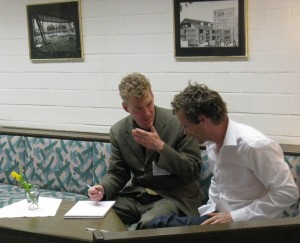A talk at the Philosophy and Model Theory conference held June 2-5, 2010 at the Université Paris Ouest Nanterre.
Set theorists commonly regard set theory as an ontological foundation for the rest of mathematics, in the sense that other abstract mathematical objects can be construed fundamentally as sets, enjoying a real mathematical existence as sets accumulate to form the universe of all sets. The Universe view—perhaps it is the orthodox view among set theorists—takes this universe of sets to be unique, and holds that a principal task of set theory is to discover its fundamental truths. For example, on this view, interesting set-theoretical questions, such as the Continuum Hypothesis, will have definitive final answers in this universe. Proponents of this view point to the increasingly stable body of regularity features flowing from the large cardinal hierarchy as indicating in broad strokes that we are on the right track towards these final answers.
A paradox for the orthodox view, however, is the fact that the most powerful tools in set theory are most naturally understood as methods for constructing alternative set-theoretic universes. With forcing and other methods, we seem to glimpse into alternative mathematical worlds, and are led to consider a model-theoretic, multiverse philosophical position. In this talk, I shall describe and defend the Multiverse view, which takes these other worlds at face value, holding that there are many set-theoretical universes. This is a realist position, granting these universes a full mathematical existence and exploring their interactions. The multiverse view remains Platonist, but it is second-order Platonism, that is, Platonism about universes. I shall argue that set theory is now mature enough to fruitfully adopt and analyze this view. I shall propose a number of multiverse axioms, provide a multiverse consistency proof, and describe some recent results in set theory that illustrate the multiverse perspective, while engaging pleasantly with various philosophical views on the nature of mathematical existence.
Slides | Article | see related Singapore talk



